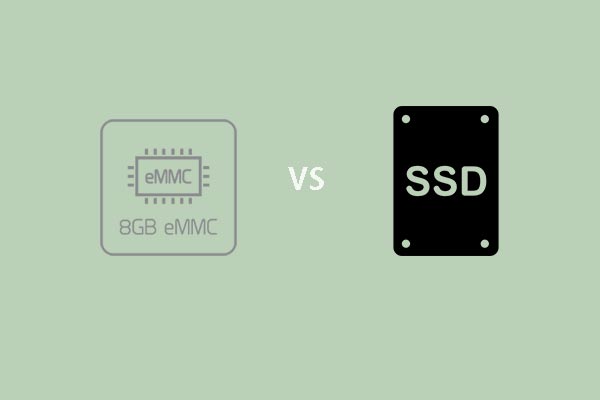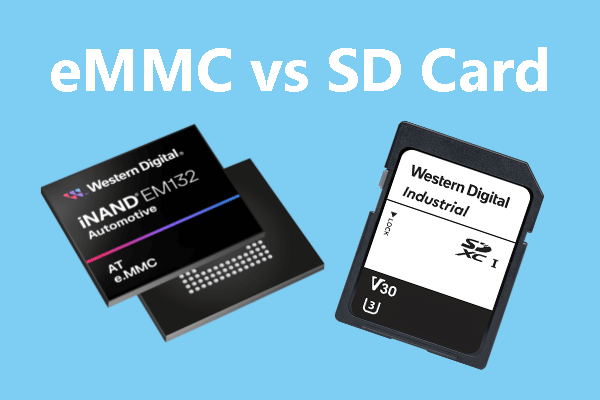Do you want to know the difference between eMMC and UFS? Why would eMMC be replaced by UFS completely? In this post, MiniTool Partition Wizard introduces eMMC vs UFS. After reading this post, you can know the reasons.
What Is eMMC?
eMMC is short for embedded MMC (MultiMediaCard). MMC is a memory card used for solid-state storage. It typically operates as a storage medium for a portable device, in a form that can easily be removed for access by a PC.
Unlike MMC, eMMC is not a user-removable card, but rather a permanent attachment to the circuit board. If there is something wrong with either the memory or the controller, the PCB (printed circuit board) would need to be replaced or repaired.
Since the introduction of SD cards, few companies build MMC slots into their devices. But the eMMC is still widely used in consumer electronics as a primary means of integrated storage in portable devices.
What Is UFS?
UFS, short for Universal Flash Storage, is a flash storage specification for digital cameras, mobile phones, and consumer electronic devices.
It was designed to bring higher data transfer speed, increase the reliability to flash memory storage, and remove the need for different adapters for different types of cards. It is positioned as a replacement for eMMCs and SD cards.
Toshiba Releases Industry’s First UFS Ver.3.0 Embedded Flash Chip
eMMC vs UFS
Since 2016, UFS started to take control of the market and almost all mobile phones and tablets used this form of flash for main storage. Why would eMMC be replaced by UFS? The reasons are as follows:
1. eMMC has been abandoned.
Both eMMC and UFS are introduced by JEDEC. Since the last eMMC version 5.1 was released in 2015, JEDEC has almost given up on continuing to develop it.
2. UFS has faster speeds.
UFS has faster speeds. The latest eMMC 5.1 has 250 MB/s read speed and 125 MB/s write speed, while the latest UFS 4.0 has 4200 MB/s read speed and 2800 MB/s write speed. Even the UFS 2.0 released in 2014 has faster speeds (350 MB/s read speed and 150 MB/s write speed) than eMMC.
Nowadays, most UFS cards are using UFS 3.1 interface, which brings 2100 MB/s read speed and 1200 MB/s write speed.
3. UFS has the LVDS signaling interface.
UFS has Low voltage differential Signalling (LVDS) signaling interface, while eMMC doesn’t. LVDS is a digital video signal transmission method developed to overcome the shortcomings of large power consumption and large EMI electromagnetic interference when transmitting high bit rate data in TTL level mode.
4. UFS has a CQ.
UFS has a command Queue (CQ) to effectively sort out commands to be carried out. This means that multiple commands can be executed simultaneously and the order of tasks can be changed and prioritized accordingly in real-time. At the same time, since eMMC has no CQ, it must wait for a process to complete before moving on to the next task.
5. UFS’s other advantages.
UFS uses a full-duplex interface, allowing simultaneous read and write, while eMMC uses a half-duplex interface, only allowing either read or write.
UFS supports Deep Sleep, write booster, throttling notifications to the host, and other advanced features.
eMMC VS HDD: What’s the Difference & Which Is Better
Bottom Line
UFS is undoubtedly better than eMMC. But please note that some low-end mobile devices may use eMMC still because the cost of eMMC is lower.



User Comments :